Who was Dracula, and what was his conflict with the Ottoman sultanate?
This was the scene of a field where about twenty thousand spears in the shape of half-sphere were buried in the ground on each side in a mile area and the mutilated corpse of each Turk prisoner was strung in spears.
On the two tallest spears were the bodies of Hamza Pasha, a regional official of the Ottoman sultanate, and the Greek Catavolinos, who died several months later.
Some of the rags of his treasured robes that had once been present on his bodies were fluttering in the air, while the only smell in the air was that of rotten human flesh.
The Greek historian Chalcadils writes that this is the scene that in June 1462, 60 miles from Turgoviste, a city in Transylvania, a state in Europe, welcomed the vanguard of the army of Mohammed II, the seventh sultan of the Ottoman sultanate.
When Sultan Mohammed II set out from Istanbul on May 17, 1462, across the Danube River to Europe to teach a lesson to the emperor of Wallachia, Prince Vilad III Dracula, few people would have imagined that this campaign would end like this.
Historians Rado Floresco and Raymond McNally, in their book ‘Dracula: Prince of Many Faces, His Life and Times’, quote the Greek historian that the scene made such an impression on Sultan Muhammad that he said, “… It is very difficult to snatch the land from such a person.
He wrote that to stay that night, the Sultan dug a deep ditch around the Turk camp and ordered the army to return the next day saying that this area was not special enough to pay such a price.
Wallachia was earlier also a state under the Osmania Sultanate, which remained even after this campaign, but according to historians it could not be converted into the kingdom of the Osmania Sultanate.
The Sultan himself returned from there, but the campaign against Vilad Dracula was not over. He had left Dracula’s brother Rado with some soldiers of the Ottoman army there.
As a result of this campaign, Dracula had to flee his kingdom and was replaced by his younger brother Rado ‘The Handsome’, a supporter of the Osmania Sultanate, became the regional officer and then sat on the throne with the help of all the classes who were troubled by Dracula’s tyranny. Were.
Historian Caroline Finkel, in her book on the history of the Ottoman sultanate, in her book ‘Osman’s Dream’, summarizes the action against Wallachia that ‘annual tax was not paid by the Kingdom of Wallachia under the Ottoman Sultanate and then on behalf of their official Vilad Dracula. Due to taking violent steps, Sultan Mohammed ordered to establish peace by crossing the Danube river in the year 1462. After successful action, Vilad’s brother Radol, who was imprisoned in Istanbul as a guarantee of Vilad’s good attitude, was made an officer in place of Vilad. Vilad himself fled to Hungary.
When the Sultan started this campaign in Europe, about ten years before, he had won the title of ‘Fateh Sultan’ by conquering Qustuntunia (Istanbul), the last sign of the powerful Byzantine Sultanate that lasted for centuries.
His sultanate had spread over more than one ocean. Seeing himself in the line of conquerors like Sikandar-e-Azam, the eyes of this Sultan were now looking far in Europe.
In this campaign in 1462, his target was Vilad Dracula, the ruler of Wallachia state under the Osmania Sultanate, who according to historians had not appeared before the Sultan for three years to deposit the tax.
In addition, historians such as Floresco and McNally write that the idea of the Sultan making Wallachia the kingdom of his sultanate was a natural phenomenon, after the annexation of Constantinople as well as ‘Bulgaria, Serbia and much of Greece’. For this, he ordered actions in the areas of the Danube River flowing east from Germany, passing through many countries, which fell into the Black Sea.
In history, the Danube River has been the main route for those who came west with the desire to conquer from the east, and the state of Wallachia was located at the northern end of this river. There was a series of good and bad relations between the families of the rulers of this state with a population of less than one million and the Osmania Sultanate for many generations.
Floresco and McNally write that the Sultan, now unhappy with the policies of the new ruler of the kingdom, Prince Vilad III Dracula, decided to deal with this problem.
He wrote that “there was bound to be a war between Dracula and Sultan Mohammed II, the only question was when? And being young as well as Sultan Mohammed, Dracula was well aware of the Sultan’s desire for victory. Dracula’s kingdom was very small compared to the Sultanate of Mohammed II, but historians write that the feeling of his rulership in it was in no way less than that of Sultan Mohammed II. This was a time when the title of Dracula was an honor.
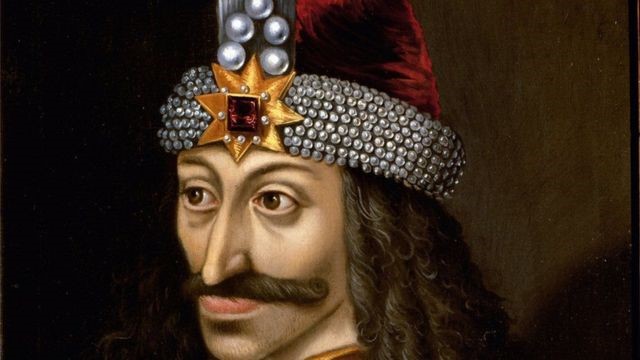
Before proceeding, let’s talk about history where two Dracula are mentioned. One that in the recent times, as every year, once again more than usual was mentioned and pictures of it were shared around the world, citing ‘Dracula Day’ celebrated on 26 May.
This Dracula is sitting with his teeth in the neck of one of his victims, then somewhere he is looking at the sky with blood dripping from his sharp teeth.
The series began on May 26, 1897, after the publication of a novel by Brem Stoker, which introduced the fictional character Dracula, who drinks blood.
This character of Dracula was probably fictional but the name Dracula was not fictional at all. In history, the prince, called Dracula, who fought the sultan of the super power of his time, on the one hand was infamous for his tyranny, and on the other he was also given the status of a national hero in Romania.
This prince of a small kingdom of Wallachia was called Vilad III. Dracula means son of Dracula. The reason for the fame of this prince in history is due to the thousands of rulers who put nails in their bodies and other people’s bodies. For this reason, Vilad III Dracula is also called ‘Villad the Impaler’ in the English language.
Interestingly, history shows that Sultan Mohammed II and Dracula also spent some time together and their teachers were also the same at that time. On the one hand the prince and successor of the Muslim sultanate spread over various oceans and on the other the son of the ruler of one of the many kingdoms under this sultanate in Europe. How these two stood under one roof, this talk later, but first the introduction of the prince who was called Dracula.
Who was Vilad the Impaler?
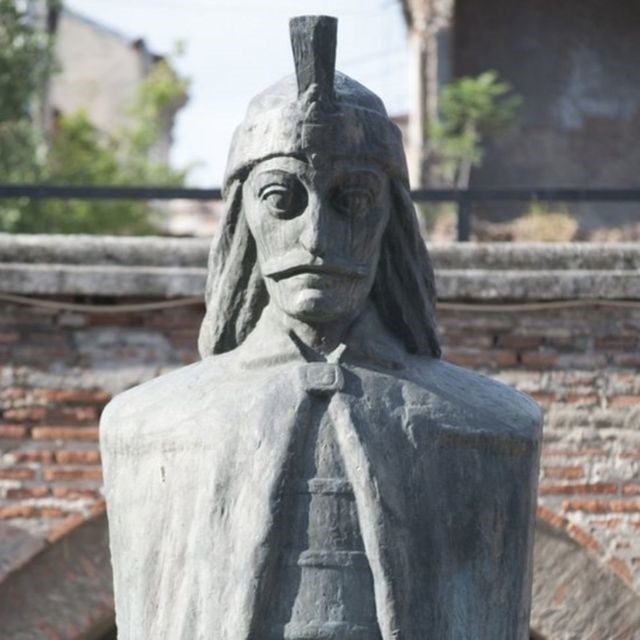
According to the Encyclopdia Britannica, the full name of Prince Vilad the Impaler was Vilad III Dracula, who was the ruler of Wallachia, a kingdom in the area of the Danube River, more than once.
He was born in 1431 and died in 1476. He was born in Transylvania and died in a northern area of present-day Romania’s capital Bucharest.
Romanian historians Floresco and McNally write that the era of Dracula was the period of the ‘two great sultans’ Murad II (1421–1451) and Mohammed II (1451–1481) in the Ottoman sultanate. He wrote that ‘Our young prince (Dracula) was also young along with Sultan Mohammed II.’
Historians of Romania write that these two Osmania Sultans were the owners of very religious and noble personalities. ‘He was a far-sighted politician who taught Europe a lesson in religious tolerance by sheltering Jews and other religious minorities at a time when the Roman Catholic Church was ‘persecuted’ them (minorities).
According to the Encyclopdia Britannica, Vilad gained fame in 15th-century Europe because of the persecution of his enemies. It has also been written here that a group of historians also believe that the Dracula of Bram Stoker’s world-famous novel is actually this melancholy.
Vilad’s father was Vilad II Dracul. He was given the title of Dracul because of his inclusion in the ‘Order of the Dragon’ to prevent the invasion of Turks into Europe by Sigismund, the Holy Roman Emperor of the Roman sultanate at that time.
According to the Encyclopedia, the word Dracul comes from the Latin word dracu meaning dragon and Dracula meaning son of Dracula. In this way the son of Vilad II Dracula was named Vilad III Dracula. Historians give many other reasons for the title of Dracula, one of which is that in Romanian language, Dracula also means ‘devil’.
According to the Encyclopdia Britannica, Dracula lived in the Sultanate of Osmania from 1442 to 1448, and then returned to Wallachia after the murder of his father and elder brother. Dracula also faced opposition from his younger brother, including the Ashrafia of Wallachia (a class that controlled power, called the Boyars), who had the support of the Ottoman sultanate, to sit on his father’s throne.
He became the ruler for the first time in 1448 but he was soon removed and then it took him eight years to get his father’s throne. During the second reign, he committed the atrocities that became the reason for his fame and he was given the name of Vilad the Impaler.
This period ended in 1462 after the campaign of Sultan Mohammed II, which has been mentioned above. Which is remembered because of Vilad Dracula’s ‘forest of corpses hanging from the sticks’.
History has it that Vilad was successful in securing the power of his father’s kingdom for the third and last time in 1476, but in the same year he was killed in a battle at the age of 45.
Vilad III Dracula and Sultan Mohammed II
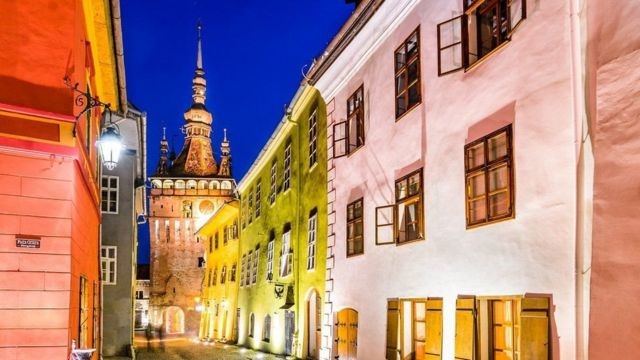
The first meeting of the princes in those days was probably in 1442 when Dracula’s father left him and his younger brother ‘The Handsome’ in the custody of Sultan Murad II as a guarantee of their loyalty to the Ottoman Sultanate.
Historians tell that at that time the age of Vilad III Dracula was eleven or twelve years and the younger brother Rado was about seven years old. At that time, Prince Mohammed was also almost the age of Dracula.
The story is such that by that time Serbia and Bulgaria had come under Ottoman occupation in Europe and Sultan Murad II was preparing to inflict the last blow on the centuries-old Baznitini Sultanate.
Vilad II Dracul, as noted above, had become a member of the ‘Order of the Dragon’ created for the Ottomans and opponents of the Roman Catholic Church, but Floresco and his fellow writer McNally wrote that he was a vicious politician and As his hold on Wallachia’s power strengthened, he realized that the balance of power in the region was in favor of the Ottomans.
Historians write that in view of the situation, immediately after the death of Sultan Sigismand of his patron Roman Sultanate, Vilad II Drakul made a treaty with the Turks.
‘Dracool and his three hundred companions appeared before Sultan Murad in Barsa, and in a solemn ceremony the Prince of Wallachia formally declared his obedience.’
It is said that after some time doubts arose in the heart of Sultan Murad (who according to both historians were rulers who respected treaties) about Vilad II. On being summoned, Vilad II went with his two younger sons Dracula and Rado to appear before the Sultan. According to historians, Ottoman soldiers chained him at the gate of the city and took both the sons to a hill fort far away.
Vilad II Drakul was the Sultan’s prisoner for about a year and during that time his eldest son Mercha, who had good relations with the Sultan, sat on the throne of Wallachia.
Dracul is finally free after swearing Ottoman loyalty to the Qur’an and the Bible. Vilad II also left his two younger sons in the captivity of the Ottomans to prove his noble intention.
Dracula at the court of the Ottoman sultan
Dracula spent the next six years away from his parents in the Sultanate of Osmania.
He could not speak the local language and his religion was also different. In fact he must have felt that his own people had left him alone.
Dracula in 1448 and his brother Rado lived in the Sultanate of Osmania until 1462.
The Troubles of the Rulers of Wallachia
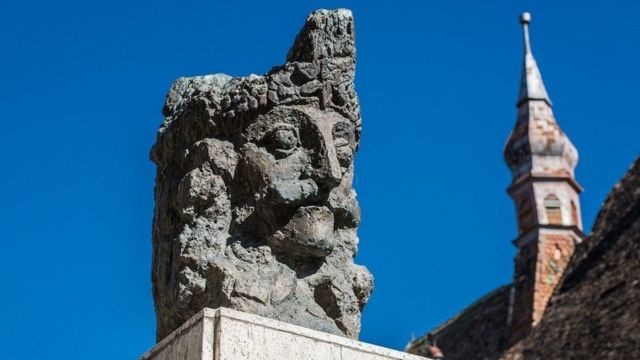
Wallachia was counted in those areas where, unlike Europe, the heir of the throne was not only the eldest son, but all the sons were entitled to take power. Therefore, if one son got the support of the great power of the West, the Roman Sultanate or the Hungarian emperors, then the other tried to get the support of the Ottomans.
This is reflected in the efforts of various members of the family of rulers for the power of Wallachia. Floresco and McNally wrote that the rulers of the Roman sultanate could not annoy the Roman sultanate Sigismand by ignoring Catholic institutions on the one hand and that they also knew that according to the tradition of Wallachia, any ruler was required to be an Orthodox Christian.
The history of opposition between Orthodox and Catholic Christians was very old and bitter. This was also one of the reasons why the Orthodox Byzantine Sultanate found it very difficult to get help from Roman Catholic Europe in the fight against the Ottoman Sultanate.
The training of the captive Prince Vilad III Dracula
When princes of small states used to come as captives in the Ottoman court, one of their purposes was to make them loyal to them. History tells that the training of those princes was done thinking that if any of them becomes the ruler of his kingdom in future, then his loyalty should be with the Osmania Sultanate.
Good treatment to those foreign princes was also included in the condition of his father’s loyalty to the Osmania Sultanate. Apart from Dracula and his brother, two princes of Serbia were also present in the Sultan’s court in those days.
The princes were blinded by their suspicious correspondence with their father, and ‘all this happened despite the tears of their twenty-two year old beautiful sister, Princess Mara, who was then the wife of Sultan Murad II.’
Dracula was trained by the best masters of that time. According to historians, he already knew more than one European language and now he had become proficient in Turkish language as well. History shows that his masters included ‘the famous Kurdish philosopher Ahmed Gurani, who had the right to whip even the successor of the Sultanate during his training.’
In addition to the Qur’an, he was taught Aristotle’s logic and mathematics. Floresco and McNally write that Dracula was a difficult student who could not control his temper and was flogged several times.
On the contrary, according to historians, his brother got a lot of attraction from both the men and women of the court because of his good appearance and appearance. The different characters of the two brothers and the different treatment they treated, led to a lot of hatred between them for each other, which had far-reaching consequences.
During this time, the Ottomans began to doubt Dracula’s father and Wallachia’s ruler Vilad II. Swords started hanging on the heads of both the princes but no action was taken against them.
Historians say that for a long time his time was spent in this state of doubt. Floresco and McNally write that this atmosphere must have left a deep impact on Villad Dracula. According to these historians, he must have felt on the one hand that his father and elder brother had put his life in danger and on the other that he could be killed by the Sultan at any time.
In 1447, Vilad Dracula’s father and brother were killed after being victims of the politics of those areas of Europe. Dracula was now free. He was made an officer in the Ottoman army and it was revealed that the Ottoman Sultanate wanted to see him on his father’s throne in Wallachia. Floresco and McNally write that Sultan Murad II was greatly influenced by him.
Villad Dracula, ruler of Wallachia
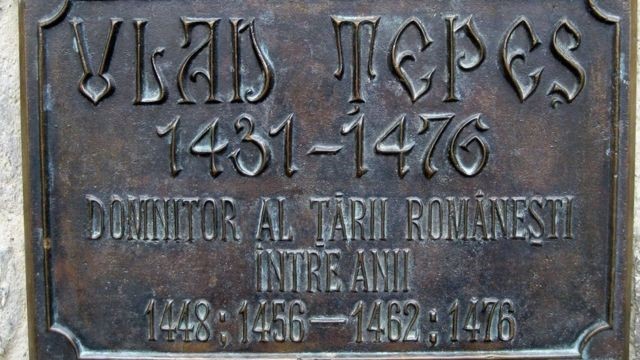
Floresco and McNally write that in 1456 the sky was illuminated by a strong star and people predicted wars, epidemics and natural disasters. It is about the same days when 25-year-old Vilad Dracula was successful in sitting on the throne of his ancestor’s kingdom Wallachia for the second time after eight years of long efforts.
Floresco and McNally write that this time also within a month the Ottomans began to doubt their loyalty and a representative of Sultan Muhammad was sent to Wallachia. Dracula accepted the terms of the Ottoman Sultanate at that time, but he did not repeat the mistake of his father, which he himself had made in 1442 by going to the Ottoman Sultanate.
The kingdom of Vilad was not very large but was spread over beautiful mountains, dense forests, lakes and fertile plains. According to historians, his palace, whose traces are still present, was destroyed many times by the Turks and then rebuilt.
The Tyranny of Villad Dracula
The purpose of all the policies of Vilad Dracula was to take power in the state, he created an army like some other states of Western Europe whose loyalty was only with him.
Floresco and McNally write that Dracula used to say that if the prince was weak in the house, he could not do his own free will outside and so for the first two years he adopted a policy of pleasing his western neighbor Hungary and eastern neighbor Ottoman Sultanate so that the trouble of his home be able to solve.
Due to the frequent change of rulers, the power had passed into the hands of the Ashrafias of the area, who were called Buyars. History shows that in the half century after 1418, the rulers of Wallachia changed twelve times, that is, on an average, one ruler sat on the throne for two years.
Dracula realized that the boyar believed in keeping the Ottomans happy. In addition, supporters of Wallachia’s predecessors were still present in the kingdom, and Dracula was yet to avenge the death of his brother Mercha.
Floresco and McNally cite a 17th-century Romanian historian and Greek historian Chalkindiles as saying that in 1457, about two hundred boyar families and certain officials gathered in their palace for Easter celebrations, they were captured.
Dracula’s soldiers nailed down the bodies of the older ones and hung them on poles outside the city wall.
The healthy people of those families were taken to a distant hill and put on forced labor to repair the ruins of an old fort from the days of their ancestors. This fort is called Dracula’s Fort.
Historians say that building such a fort for the ruler of a subordinate state was against the orders of the two powerful neighbors Hungary and the Ottoman Sultanate. It is said that there was a secret way in this fort, through which Dracula managed to escape in 1462 when power was snatched from him.
Floresco and McNally write that during this period of their power forced labor, either through the old Ashrafia nails in the area or in the famous Dracula fortress, had almost ceased. Of those who took his place, 90 percent came from the lower strata or those who were formerly independent farmers.

Dracula created a new post by the name of ‘Armaji’. These armies were only under the orders of Dracula and their job was to get the new justice system implemented. They included Romanians, Hungarians, Turks, Serbs, Tatars and some Negroes. His salary was very good and he was not bound by any principles.
These were Dracula’s ‘axes’, ‘masters of hanging on spears. ‘ But as Floresco and McNally point out, this class also worked for its own benefit rather than Dracula’s passion for loyalty, and when the deportation of people from his kingdom increased in the late period of his era, these armies also did not work. Apart from Armaji, many armed squads were also formed during that period.
Historians say that ‘tyranny and religion had become one in his confused mind and he used to resort to religion many times in defense of his crime.
‘The incident of hitting the nails in the heads of diplomats’
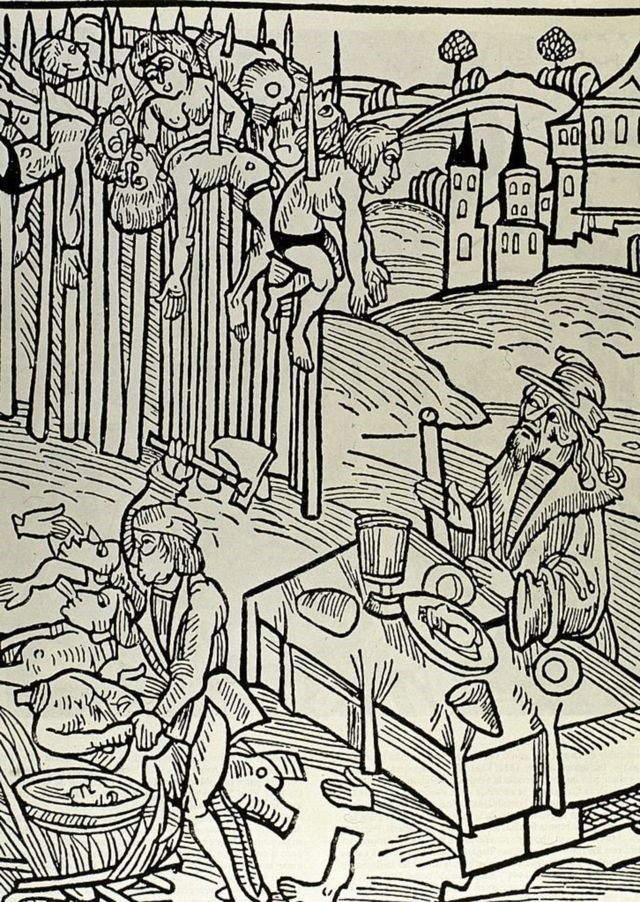
In their book, Floresco and McNally refer to a German of the time, Michael Behm, who reported the arrival of some diplomats from Italy to Dracula’s court.
Michael Behm wrote that to the best of his knowledge, those diplomats took off their large hats in honor of Dracula, but allowed the skull cap to be worn under them, saying that according to their tradition, the skull cap was the sultan’s cap. Not even taken off in front.
It is further written in the book that Dracula, upon hearing this, ordered all of them to put a nail between their heads on the ‘Skull Cap’ and during this time he used to say to those diplomats that ‘Trust me, I will strengthen your tradition even more. I am.’
Whose hero is Dracula?
Where Dracula ended Ashrafia, he helped the farmers. They stopped paying tax to the Ottoman Sultanate after 1459 and in this way the farmers became free from that tax. Apart from this, he also refused to give five hundred boys to the Osmani army. Historians tell that boys were not taken from any subordinate state anyway, but they were told this.
According to historians, it is said that in the era of Dracula, elders could not escape punishment by paying money as it used to be. And for this reason, in response to the Ottoman attack in 1462, the farmers supported Dracula.
History shows that he used to come out in disguise at night to find out the condition of the farmers. In the book of Floresco and McNally, one of the Romanian folk tales is recorded that once upon seeing a farmer dressed in small sized clothes, Dracula put his wife to death on the charge of miserliness and nailed it down there.
The farmer pleaded that he was happy with this woman, but Dracula said that the wife he would get after this would make him even happier.
History shows that during his time, women who had sex before marriage and after marriage with someone other than the husband were punished very harshly.
Legends are famous of how he once burnt alive in the same room after serving a gang of beggars that they wanted to live on the hard work of others.
Sultan Mohammed II’s campaign against Dracula
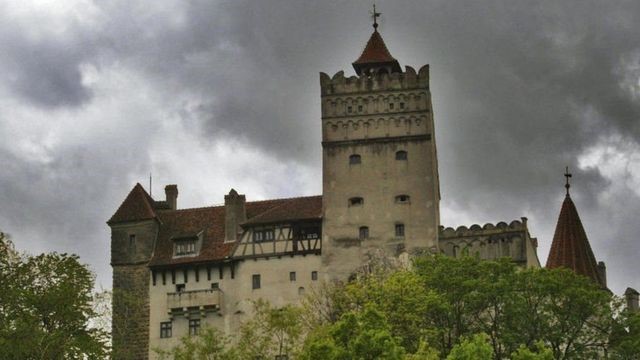
As mentioned earlier, Dracula stopped paying taxes to the Ottoman Sultanate after 1459 and also engaged in provocative action according to the Sultanate.
There were also contacts between the Ottoman Sultanate and Dracula, but during this time two Ottoman high officials were killed by Dracula and taking advantage of Turkish mastery, he opened the door of a fort in Ottoman occupation and burnt it, and then formally the war broke out.
Dracula also sought help from other powers in Europe in the name of religion, but in some cases he did not get much good response due to the local situation and in some due to historical differences between Orthodox and Catholic Christians, but historians write that this thing led him to Osmania. did not stop him from going against the Sultanate.
He started small guerrilla operations throughout the region against the Osmania Sultanate, while the Sultan himself was involved in war campaigns in Asia at that time.
History mentions a letter written by Dracula to the Pope in those days that ‘…we killed 23884 Turks and Bulgars, and they did not include those who were burned in their homes or whose heads were our soldiers. did not bite.
Historians tell that after hearing of the deaths and losses at the hands of Dracula, the Sultan himself went to conquer Wallachia on 17 May 1462. Dracula sought help from Europe as soon as possible that if he was defeated, it would be dangerous for all Christians. But historians write that they did not get as much help as they expected.
Floresco and McNally write that the summer in 1462 was very hot. Dracula sent the entire population to the mountains, forests and marshy areas. The Osmani army did not get a chance to fight after several days’ journey and the problem of thirst was different. He also caused a lot of damage to the Turks by guerrilla attacks.
He has written in his book that Dracula made a sudden attack on his camp one night with the intention of killing the Sultan, which failed. Finally, when the Sultan’s army approached the capital of Dracula, they saw the scene that is most mentioned in history. ‘Thousands of spears in the shape of a half-sphere were buried in the ground for a mile and on them were the rotten corpses of about 20 thousand Turkish soldiers.’
Floresco and McNally write that Sultan Mohammed II returned the next day, but this does not mean that Dracula won the battle. The Sultan then left Dracula’s brother, Rado the Handsome, there with some Turkic troops so that he could join the local people and sit on the throne in his brother’s place with the support of Ashrafiya. In return, the Turks guaranteed the state’s traditional sovereignty.
He wrote in the book that the local population preferred the Rado over Dracula’s tyrannical administration, in exchange for the support of which the Ottomans promised to stop the forced recruitment of boys into the army.
Dracula’s Escape
Dracula sought support from the Hungarian emperor after escaping, but he declared the support of his brother Rado and made a five-year treaty with Sultan Mohammed. Dracula was no longer a mighty prince, but he only had a reference to past adventures.
The King of Hungary, inspecting the political situation on all its borders, arrested Dracula.
But there was a wave in Europe against the arrest of Dracula, because a few months earlier, he had become the hero of all because he had to face Sultan Mohammed II and, according to him, ‘lost’.
The King of Hungary apparently tried to create a reason for his arrest by writing some letters to Sultan Mohammed on behalf of Dracula. Apart from this, people in German areas had not yet forgotten the atrocities of their era.
Floresco and McNally explain that Dracula’s status was not that of an ordinary prisoner, but after some time he also started sitting in the Hungarian court. Many times the King of Hungary thoughtfully made him sit in the court during talks with the Ottoman representatives. He was imprisoned like this in Hungary for 12 years.
In their book, Floresco and McNally wrote with reference to some officers of the time that Dracula used to bring animals to the prison and try the methods of punishment given to his prisoners on them.
Dracula’s Last Battle
Meanwhile, Dracula’s brother Rado lost the power of Wallachia and died in 1475. Hungary also started thinking about putting Dracula on the plank again on this occasion.
Dracula again participated in the campaign against the Turks in Bosnia with the King of Hungary and succeeded. Historians write that King Matthias of Hungary made him promise to leave Orthodoxy and convert to Catholicism and supported him to become the ruler of Wallachia for the third time.
Dracula ascended the throne for the last time in November 1476 and was killed by the Turks in battle the following month in December. But there are many opinions about his last moments.
Spearheaded Human Corpses Field: History and Villain III Dracula
Historian Matai Kazako in his book ‘Dracula’ refers to a four- to six-page pamphlet in 1463 which is said to have been published in Wayana and was titled ‘History of Viewwood Dracula’.
The Kazakhs say that according to the unknown author of this pamphlet, Dracula was the most violent and cruel ruler in history.
‘The atrocities committed not only on one’s own people, but also on others, for example Jews, Christians, Turks, Germans, Italian pagans, do not live without affecting.’
Referring to this pamphlet, he wrote that Dracula made the punishment of killing the human body with spears even more painful. He used to keep the mouth of the spear round instead of the sharp tip and buried them in the ground and made the humans sit on it and in this way due to the pressure of the human body, the spear would slowly sink into the body and it would take two to three days for it to die. Looks like ‘During this, crows would even remove their eyes in their full senses.’
The Kazakhs write that even taking into account the great tyrants of history, the things written about Dracula are unusual.
But there is also a mention of another booklet in the introduction of this book which tells us that it was distributed in Russia at the end of 1486. ‘To the best of our knowledge it was never printed but it had at least 22 hand-written copies.’
Here Dracula is presented as a strict but a just ruler, a wise and decent ruler who is trying to save his kingdom from the Turks.
In the introduction of the book, it is written that Vilad III is depicted as a cruel ruler in Latin, German, Russian and Balkan books and all of them have drawn his picture according to their ideological and political needs and we need to examine it. is needed.
It has been written about Dracula’s own area of Wallachia that Vilad III was forgotten over time there. He was mentioned again in the 19th century by German, Russian and Hungarian historians in the form of old pamphlets and writings.
The important question for the historians of Romania was that on the one hand there was the form of a very cruel prince and on the other hand a man who had shown great courage in confronting Sultan Mohammed II, the conqueror of the Ottoman Sultanate.
Eventually, Dracula, or Vilad III, was accepted as a national hero for his work in the defense of Romania (the new country emerged in 1918 from the amalgamation of Wallachia, Moldovia and Transylvania).


